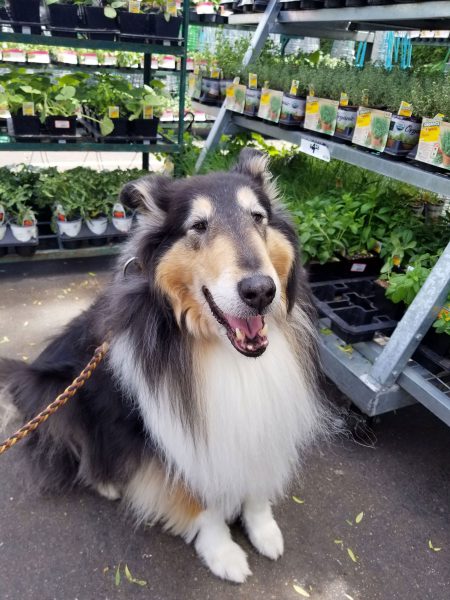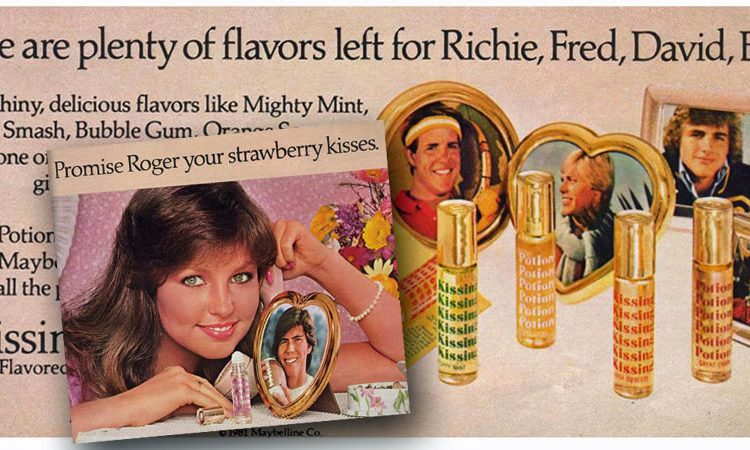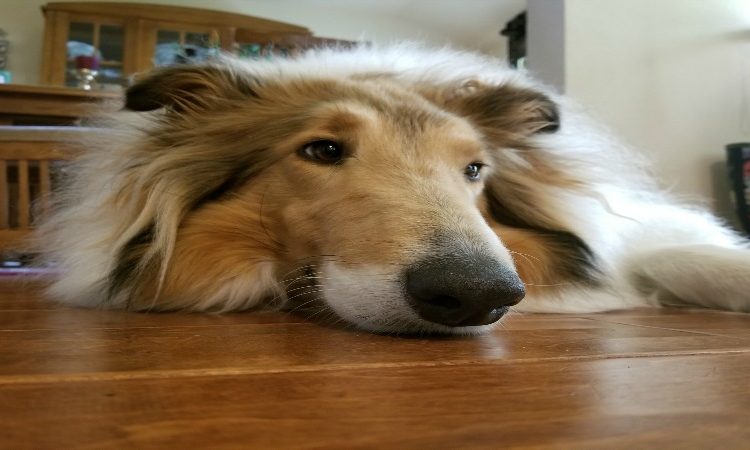Warmer weather means more time outdoors with our pets. On my daily walks with my dogs, I’ve noticed that many of my neighbors are avid gardeners with prize worthy yards full of colorful blooms: orange poppies, purple and pink hydrangeas, and red geraniums. While these plants are stunning, not one of them is pet safe. Sure hope they don’t have those same plants in their backyards if they have pets who might eat them!
Nonetheless, I am feeling inspired to get started on my own garden. I like to plant in pots that I can move around and change up, allowing me to be more creative. This year, I am leaning toward planting flowers and plants that are not only safe for my collies, but beneficial from the standpoint of either being edible, being a good bug repellent, or both! There is always so much talk about what you shouldn’t plant in your garden, I figure it’s time to talk about what you should!

Gerbera daisies are fine.
Roses are safe and with over 100 species, you have lots of choices. Just remember to stick with those in the family Rosacea. There are many plants with the word “rose” in their name which aren’t really roses and which aren’t safe for our pets. Just for fun, why not plant dog-rose in your garden? It’s a wild, climbing rose that is very different from the roses we are most used to seeing. Sunflowers and gerbera daisies come in a wide variety of hues, are easy to grow, and then bring the cut flowers indoors. Zinnias are in the daisy family and safe for dogs and cats as well. Plus, planting zinnias means you’ll have butterflies in your garden! I love all of the colors of snapdragons and the pretty purple flowers on the sweet potato vine. Both are super easy to grow, even for a novice gardener like me and they do quite well in pots. If you plant marigolds you will not only get to enjoy their vibrant oranges and yellows, but you’ll incur insect repelling benefits as well. Marigolds are great for repelling both mosquitoes and aphids, so planting around your roses will help control a pest that you so often find there. I love all of the colors available with pansies (Viola family) and think they can really liven up a spring or summer salad with their flavor. Keep your pansies in hanging baskets, however, if you have pets who might eat them as well. Pansies, while safe for human consumption, are mildly poisonous to animals.

Herbs are good dog choices.
Herb gardens are a lot of fun because they grow quickly, meaning you will soon be able to clip and snip for your own meals, with the added bonus that if your pets get into them, they are safe. Dill, basil, thyme, rosemary, sage, cilantro, oregano, and lemon balm are just a few to think about planting with an eye to your next culinary adventure. Parsley CAN be safe; if you have a puppy or kitten, however, I’d stay away from parsley as the frilly leaves can be super attractive and high doses of parsley can cause liver and kidney problems. Planting basil will have the added benefit of repelling mosquitoes and flies, while rosemary will repel fleas and ticks. Definitely plan to plant some catmint in your garden as a border. People often confuse catmint and catnip; while both are in the genus Nepeta, catnip has less ornamental value in your garden as compared to catmint. Both are edible, however, and have lovely purple blooms. Cat mint also repels insects, in particular those dreaded mosquitoes destined to be bad this year, thanks to all the rain.
There are also herbs and plants that can be used medicinally for you and your pets! Echinacea (cone flowers) has beautiful, daisy-like flowers and immune boosting properties, while burdock herb helps with allergies and digestive issues. Milk thistle can help with liver disorders and peppermint can help with indigestion and nausea, as well as repel spiders, mosquitoes and ants in your garden. Definitely keep mint in pots as it spreads rapidly and can take over your entire garden if you aren’t careful! Chamomile can be dried for tea and has the cutest, white daisy-like flowers. And my favorite, lavender, repels moths, fleas, flies, and mosquitoes, and both leaves and flowers can be dried and eaten. It’s very easy to make your own lavender syrup for your next iced latte, tea, cocktail, or bowl of ice cream. There are more than 450 varieties of lavender to choose from as well! If you have a puppy, however, I would avoid lavender if you think the flowers will be too much of a draw for them. In large quantities, lavender can be stomach upsetting for animals.

Collies love lavender.
Finally, if you just can’t give up those geraniums, hydrangeas, begonias, or bulbs, why not plant dog’s bane around those toxic plants? Dog’s bane is an herb in the mint family with a strong odor that works as a natural deterrent for cats and dogs.
Hope you are now as inspired as I am to get out there and clean up your winter garden and prepare for the hot summer weather ahead. Be sure and let us know what you’re growing in your pet safe garden and share your photos!







Leave a Reply